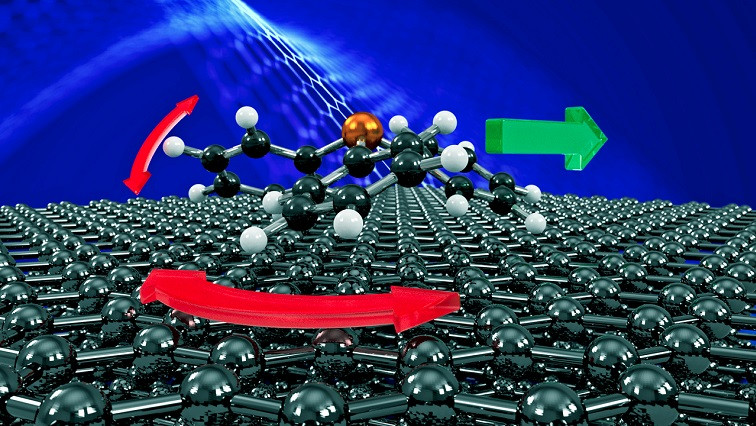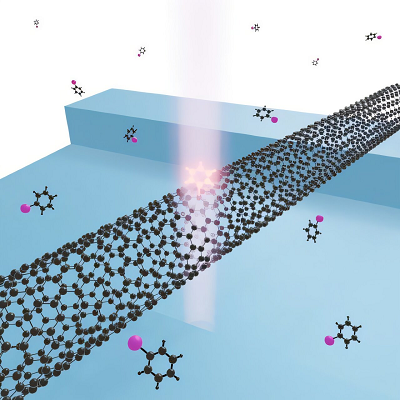For years, scientists have been intrigued by how molecules move across surfaces. The process is critical to numerous applications, including catalysis and the manufacturing of nanoscale devices.
Now, using neutron spectroscopy experiments performed at Institut Laue-Langevin (ILL) and advanced theorical models and computer simulations, a team led by Anton Tamtögl, from Graz University of Technology, unveiled the unique movement of triphenylphosphine (PPh3) molecules on graphite surfaces, a behaviour akin to a nanoscopic moonlander. In fact, PPh3 molecules exhibit a remarkable form of motion, rolling and translating in ways that challenge previous understandings. This moonlander-like motion seems to be facilitated by their unique geometry and three-point binding with the surface.
“Delving into the complex world of molecular motion on graphite surfaces has been an exciting journey,” reveals Anton Tamtögl, adding: “Measurements and simulation unveiled a sophisticated motion and ‘dance’ of the molecules, providing us with a deeper understanding of surface dynamics and opening up new horizons for materials science and nanotechnology.”
Triphenylphosphine is an important molecule for the synthesis of organic compounds and nanoparticles with numerous industrial applications. The molecule exhibits a peculiar geometry: PPh3 is pyramidal with a propeller-like arrangement of its three cyclic groups of atoms.
Neutrons offer unique possibilities in the study of materials’ structure and dynamics. In a typical experiment, neutrons scattered off the sample are measured as a function of the change in their direction and energy. Due to their low energy neutrons are an excellent probe for studying low energy excitations such as molecular rotations and diffusion. Neutron spectroscopy measurements were performed at ILL Instruments IN5 (TOF spectrometer) and IN11 (neutron spin-echo spectrometer).
“It’s amazing to see how ILL’s powerful spectrometers allow us to follow the dynamics of these fascinating molecular systems even if the amount of sample is tiny,“ says ILL scientist Peter Fouquet, explaining that “Neutron beams do not destroy these sensitive samples and allow for a perfect comparison with computer simulations.“
The study shows that PPh3 molecules interact with the graphite surface in a manner that allows them to move with surprisingly low energy barriers. The movement is characterised by rotations and translations (jump-motions) of the molecules.While rotations and intramolecular motion dominate up to about 300 K, the molecules follow an additional translational jump-motion across the surface from 350-500 K.
Understanding the detailed mechanisms of molecular motion at the nanoscale opens up new avenues for the fabrication of advanced materials with tailored properties. Apart from the fundamental interest, the movement of PPh3 and related compounds on graphite surfaces is of great importance for applications.
The study has just been published in the Nature Portfolio open access journal Communications Chemistry – and is featured (as a banner) on the journal homepage.
Read the original article on Institut Laue-Langevin.







